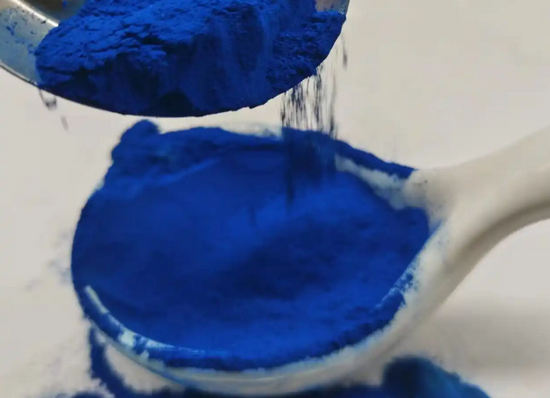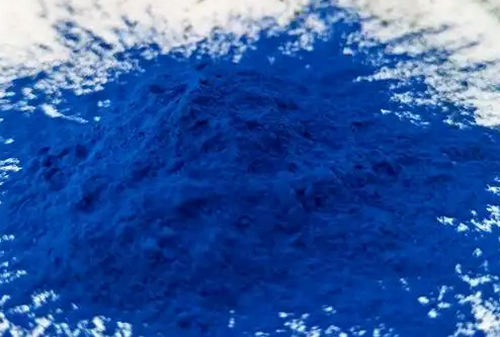Pigment blue 60 manufacturer says there are two main methods of coloring rubber products: surface coloring and mixed coloring.
Surface Coloring
Surface coloring refers to spraying pigment onto the surface of rubber products to color the surface of rubber products. This method has certain effect on static products, but for dynamic products, the pigment on the surface is easy to fall off and lose color.
Mixing Coloring
Mixing coloring is the most commonly used and the main method in rubber coloring. Mixing coloring is also divided into solution method and mixing method, of which mixing method has dry powder coloring, color paste coloring, granule coloring and masterbatch rubber coloring and other methods.

1. Solution coloring
Solution coloring is the rubber using other solvents, dissolved into a certain concentration of solution, and then will be pigments and rubber compounds except sulfur yellow added to the solution stirring evenly mixed at a certain temperature under the drying to remove the solvent, and finally in the refining machine to add people sulfur yellow. This coloring method is complicated to operate, pigments and compatibilizers are easily dispersed unevenly, there is a color difference, the solvent is also difficult to recycle, easy to cause environmental pollution, at present this method has been rarely used.
2. Mixing method coloring
At present, coloring by mixing method is the most commonly used method for coloring rubber products, which is to add pigment directly or mix with carrier first and then add people into rubber, and then mix uniformly through rubber refining machine to make rubber coloring. The specific methods are as follows:
● Dry powder coloring
This method is to directly add the powder pigment into the rubber together with the small material and mix it in the refining machine. The advantage of this method is simple operation and low cost, but the dust is big when mixing, polluting the environment, and it is not easy to disperse uniformly, there is color difference, and if the particles are too hard and too coarse, it will also cause the color point, stripes or chromatographic pollution and other quality problems, which is less used at present. In order to facilitate the use, the powder pigment can be made into pre-dispersed pigment together with stearic acid and sulfate, etc., which have been sold in the market.
● Color paste coloring
This method is to mix the pigment with the liquid cooperating agent (such as plasticizer) firstly, and grind it with three-roller machine to make paste or slurry, and then add it into rubber mixing according to a certain proportion. This method can avoid dust flying, and it is also conducive to the dispersion of pigment in the rubber and the uniformity of color. However, the content of pigment in the color paste is low, the coloring is not high, the transportation is large, the loss is large, and it is inconvenient for users to use.

● Granule coloring
There are two main ways to prepare pigment granules. The first method is the same as the granulation method of other powdery compatibilizers, in which the powdered pigment is firstly moistened with surfactant, and then granulated by wax melting or extruded by melting with resin; the second method is to moisten the pigment with surfactant, and then make the pigment particles finely granulated by mechanical force, and then make the dispersion of a certain concentration, and then mix and co-submerge it with latex and granulate the granules after drying and rolling. The surfactants are mostly anionic and nonionic, such as fatty acid salts, sulfonates, etc. The latex usually adopts natural latex. This kind of granular pigment is easy to use, has good dispersion, no dust flying, does not pollute the environment, has bright color, even color, no color difference, and is a coloring method with promising development. However, the preparation process of granular pigment is complicated and the cost is high, which limits its wide application.
● Masterbatch coloring
This method is to mix pigment, part of plasticizer and other matching agent of rubber with raw rubber by opening machine to make pigment masterbatch with concentration of about 50%, and then mix it into rubber according to the proportion of coloring. This method is more effective for the coloring of pigments with fine particles and difficult to be dispersed, with even color and no color difference. Pay attention to the concentration of pigment in the masterbatch and deduct the amount of other matching agents in the masterbatch.
Concerning the selection of pigment, the choice of suitable color pigment depends on the previously described processing requirements and the final use of the product, of which the latter is more important. The following factors must be considered:
● Resistance to color fading, caused by factors such as sunlight, exposure to heat or natural aging.
● Resistance to color bleeding and harmful effects on the aging properties of the basic rubber material, avoiding colors containing copper or manganese.
● Because colored rubber products must compete in the marketplace, reducing the cost per pound of color for vulcanized rubber products requires careful selection of the most economical pigment to achieve the desired results.





